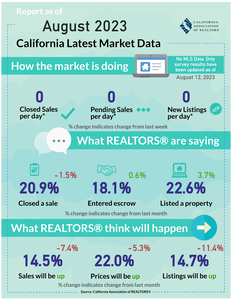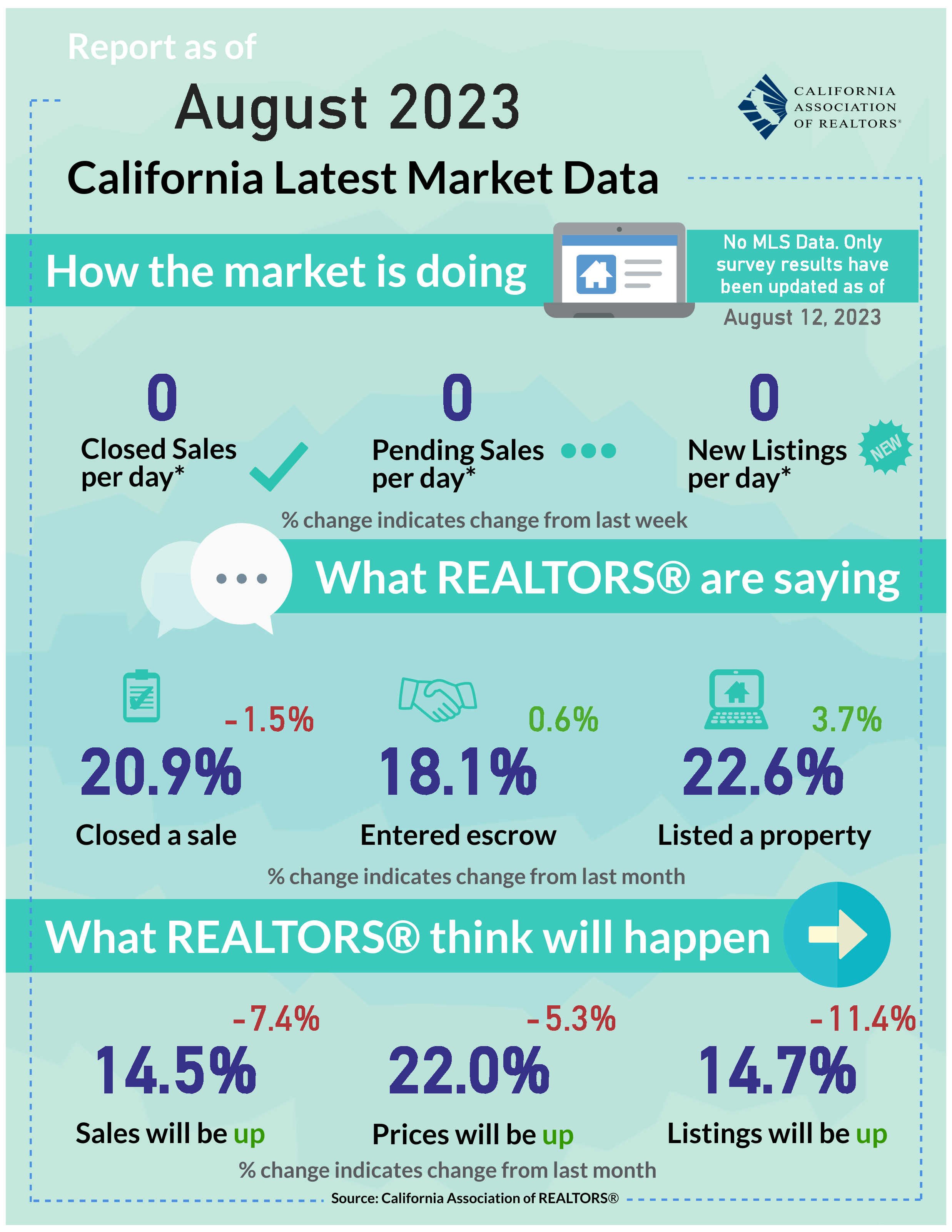 Housing affordability remained an issue in the second quarter and the problem will persist in the second half of the year as rates continue to stay high. Despite inflation easing closer to 3% in the last couple months, rates have been climbing further in the last two weeks as food and energy prices are expected to increase in coming months. With inflation not likely to come down meaningfully in August and September, there is a chance that the Fed could raise its policy rate one more time before the end of the year. As such, mortgage rates could remain elevated for a longer period than what the market previously anticipated.
Housing affordability remained an issue in the second quarter and the problem will persist in the second half of the year as rates continue to stay high. Despite inflation easing closer to 3% in the last couple months, rates have been climbing further in the last two weeks as food and energy prices are expected to increase in coming months. With inflation not likely to come down meaningfully in August and September, there is a chance that the Fed could raise its policy rate one more time before the end of the year. As such, mortgage rates could remain elevated for a longer period than what the market previously anticipated.
Housing affordability lowest since 2007 as rates remain elevated: C.A.R. just released its second quarter Housing Affordability Index and the share of households in California that can afford to buy a typical single-family home dropped to 16%, the lowest since Q307. Higher mortgage rates continued to push cost of borrowing to an all-time high, resulting in an increase of 8.1% in mortgage payment from Q123 and a 5.3% jump from Q222. A minimum qualifying income of $208,000 was required to make the monthly payment of $5,200 for a median-priced home, at the prevailing 30-year fixed-rate mortgage of 6.61% in the state. The minimum income required in Q223 was a new record high and was the second time in the last three quarters that it exceeded $200,000. With interest rates near the highest level in the past 17 years and expected to remain elevated for the remainder of the year, housing affordability will remain a challenge for many homebuyers in the coming quarters.
July inflation continues to moderate but may inch up August: Despite headline inflation rising annually from 3% in June to 3.2% in July, the monthly increase of 0.2% last month continued to moderate from the 0.5% average gain in 2022. Meanwhile, core inflation continued to decline gradually on a year-over-year basis from 4.8% in June to 4.7% in July, and the 3-month annualized average of 3.1% was the slowest pace since September 2021. Prices of housing remained up but cooled from early 2023, while used cars/trucks softened further in July and airline fares dropped sharply on a year-over-year basis. The downward trend in the headline inflation figure, however, could reverse in coming months as gasoline began to head up again while producer prices for food also climbed up in July. Geopolitical tension and weather-related factors could continue to put upward pressure on food and energy and may disrupt the declining path in inflation in the next few months.
Consumer sentiment stays flat in August: After peaking to a 21-month high in July, consumer sentiment released by the University of Michigan was virtually unchanged in August. The index for August 2023 dipped slightly to 71.2 from 71.6 in July but was still well above the all-time low of 50 reached in June 2022. Consumers had a better outlook on prices, as their year-ahead inflation expectation edged down to 3.3% this month from 3.4% in July. The latest reading, nevertheless, remains higher than the 2.3% – 3.0% range registered in the two years prior to the pandemic. While consumers seem to be convinced that inflation is cooling, their perception on interest rates remains unchanged. A majority of consumers still expects interest rates to rise over the next year. Their projections on the rate outlook, however, could have been affected by the rising trend in rates since late July.
Mortgage rates reach highest level since November: Interest rates have been steadily rising since early April and just hit the highest mark in nine months. The average 30 year fixed-rate mortgage rose 5bps and reached 7.24% on August 14, 2023, as reported by Mortgage News Daily. Cooler inflation in July was supposed to minimize the odds of the Fed’s next rate hike and reverse the rising trend in rates observed in the past few months. Instead, the upward momentum continued shortly after the release of the consumer price index and rates kept rising after the release of the producer price index last week. Elevated oil and food prices in the short term and the increasing odds of achieving an economic soft-landing in 2024 might have suggested to many in the market that the Fed could hold its policy rate steady for a little longer. As such, rates continue to climb in the past couple of weeks despite cooling trend in inflation and will likely stay elevated through the rest of the third quarter until the Fed sends a more decisive message to the market about its next rate move.
Small firms improve their business outlook: Small business optimism improved again in July, pushing the index up for the third consecutive month to 91.9. Despite the increase, the index remained below the historical average of 98 for the 19th straight months. Small business owners were feeling more positive as inflation eased, economic conditions improved, and future sales expectation boosted. While 42% of all owners continued to have difficulty filling job openings in July, it was down from its recent high of 51% recorded in mid-2022. The increase in optimism also raises capital expenditures in the future as 27% of owners plan to step up capital outlays in the next few months, an increase of two percentage points from June.



